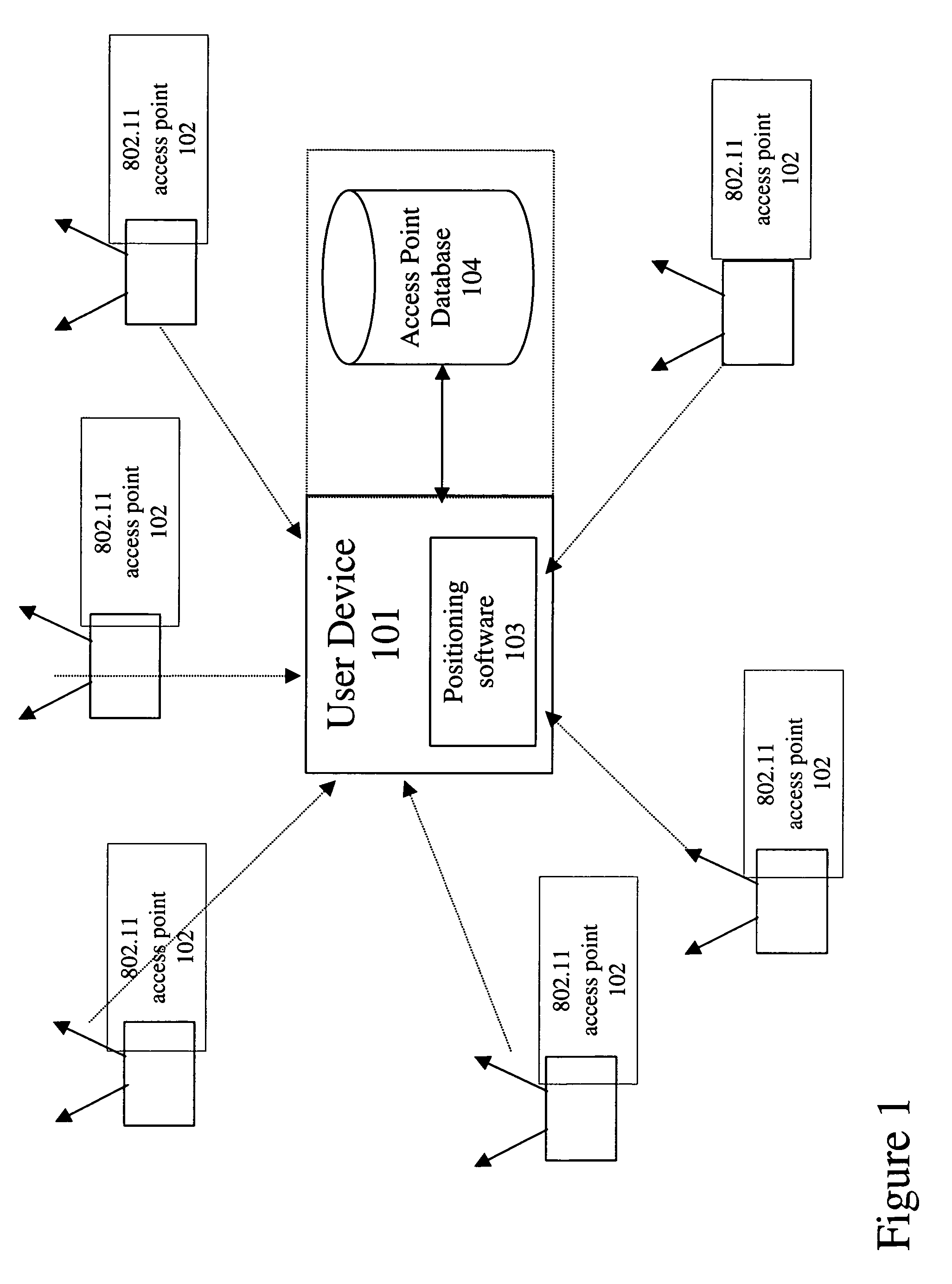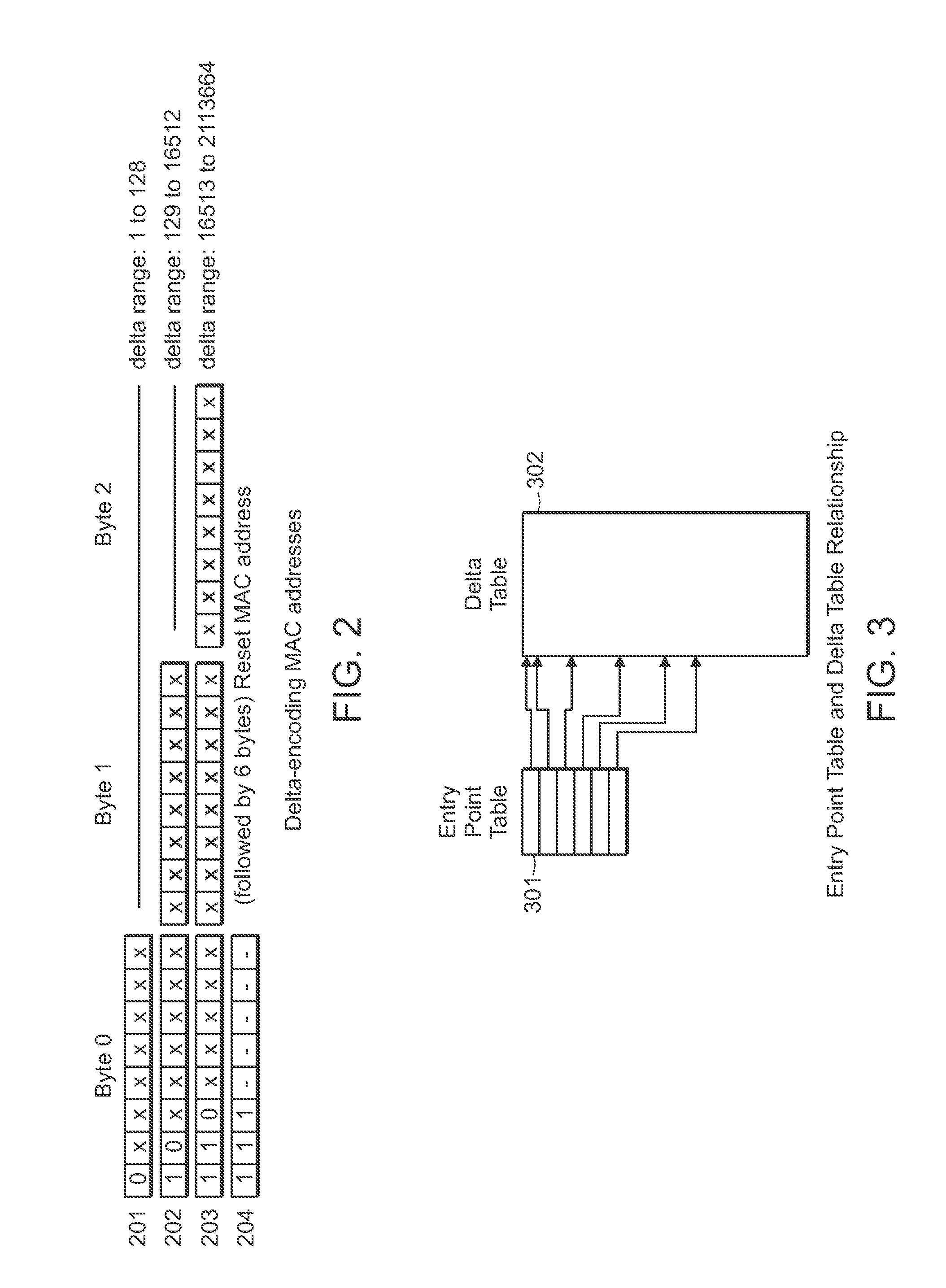Encoding and compression of a location beacon database
a technology of location beacons and database, applied in the field of location-based services, can solve the problems of suboptimal approaches, substantial errors, confusion of receivers, etc., and achieve the effect of facilitating storage and/or transmission of database contents
- Summary
- Abstract
- Description
- Claims
- Application Information
AI Technical Summary
Benefits of technology
Problems solved by technology
Method used
Image
Examples
Embodiment Construction
[0038]Embodiments of the present invention provide methods for encoding and compression of a location beacon database, such as a 802.11 Wi-Fi access point database, for use in a Wi-Fi Positioning System. The access point database may contain millions of access points with corresponding locations of the points. This presents a challenge for any device centric model where the database is wirelessly downloaded and kept locally on the mobile device. However, it is desirable to have an access point database on the mobile device. By leveraging the device centric model, users do not require a continuous network connection. Removing the network requirement allows the database to be usable in more application scenarios. Under certain embodiments, a data encoding and compression technique significantly reduces the data storage requirements for the access point database, making it easier to distribute the database or segments of the database to Wi-Fi enabled devices.
[0039]An uncompressed MAC a...
PUM
 Login to View More
Login to View More Abstract
Description
Claims
Application Information
 Login to View More
Login to View More - R&D
- Intellectual Property
- Life Sciences
- Materials
- Tech Scout
- Unparalleled Data Quality
- Higher Quality Content
- 60% Fewer Hallucinations
Browse by: Latest US Patents, China's latest patents, Technical Efficacy Thesaurus, Application Domain, Technology Topic, Popular Technical Reports.
© 2025 PatSnap. All rights reserved.Legal|Privacy policy|Modern Slavery Act Transparency Statement|Sitemap|About US| Contact US: help@patsnap.com



